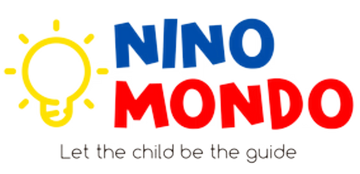
What do children learn from trajectory schema and everthing else about it?
Picture this: your baby is dropping food from their highchair, throwing things across the room, or rolling balls around. While it might seem like a chaotic mess, what they’re really doing is exploring how objects move through space. This is all part of their natural development, and it’s called the trajectory schema!
What are Schemas? Learn more about schemas in detail here.
What is the Trajectory Schema?
The Trajectory schema is all about movement—how things fall, roll, and fly through the air. This exploration is essential for helping your child understand cause and effect, develop motor skills, and learn about the world around them. The cool thing is that the way babies and older kids engage with this schema can look quite different!
The trajectory schema refers to the way infants explore movement, particularly how objects travel through space. It encompasses behaviours such as throwing, dropping, rolling, and pushing objects. During this period, babies are not just playing; they are experimenting with the physical properties of objects and learning about the effects of gravity, force, and motion.
When Does the Trajectory Schema Occur?
The trajectory schema typically begins to emerge in infants around the age of 0 to 12 months. During this time, babies are naturally curious and eager to explore their surroundings. They engage in repetitive actions, such as dropping toys from their high chair or rolling balls across the floor, which helps them understand how objects behave when they are in motion.
Behavioural Indicators of the Trajectory Schema
You can recognize the trajectory schema in your baby through various behaviours, including:
- Dropping Objects: Infants will often let go of toys to observe what happens when they fall. This action helps them learn about gravity and the concept of cause and effect.
- Throwing and Rolling: Babies may enjoy throwing balls or rolling objects to see how far they can go. This encourages them to experiment with different forces and angles.
- Pushing and Pulling: Engaging with toys by pushing or pulling them helps infants understand how objects interact with physical forces.
Skills Developed Through the Trajectory Schema
Engaging with the trajectory schema supports the development of several essential skills, including:
- Fine and Gross Motor Skills: Repeated actions like throwing, rolling, and pushing help strengthen the muscles in your baby's arms and hands, improving their coordination and control.
- Spatial Awareness: As infants learn to track moving objects, they develop a better understanding of space and distance.
- Cognitive Development: The trajectory schema encourages problem-solving skills as babies experiment with how different objects move and react to their actions.
Montessori Activities to Support the Trajectory Schema
Incorporating activities that align with the trajectory schema can enhance your baby's learning experience. Here are some engaging Montessori-inspired activities to try:
- Ball Rolling: Set up a soft surface and roll a ball back and forth with your baby. This simple activity encourages them to track the movement and understand how force affects the ball's trajectory.
- Rolling Toys: Toys that roll, such as cars or trucks, can captivate your baby's attention and encourage them to explore movement.
- Dropping Games: Use a coin drop box or a ball tracker to allow your baby to drop objects and observe where they go. This reinforces their understanding of cause and effect.
- Water Play: Fill a shallow container with water and provide floating toys. Allow your baby to drop toys into the water and watch how they float or sink, reinforcing their understanding of movement and buoyancy.
List of words to support the Trajectory Schema
Throw, Roll, Bounce, Slide, Fly, Spin, Drop, Launch, Swing, Glide
Communicating the understanding of the Trajectory Schema through language.
When engaging with your child during these activities, use encouraging phrases that reinforce their exploration of the trajectory . Here are some examples:
- “Look how far the ball rolled!”
- “What happens when you drop this toy from a higher place?”
- “Can you make the ball go faster?”
- “Let’s see if this toy can roll all the way to the end of the table!”
Here are a few example of incorporating the different words and using descriptive language to help them connect their actions with the outcomes, enhancing their understanding of the trajectory schema.
Throw: “Can you throw the ball?”
Roll: “Let’s roll the car on the floor.”
Bounce: “Watch the ball bounce up and down!”
Slide: “The toy can slide down the ramp.”
Fly: “Look, the airplane can fly high!”
Spin: “Spin the top and see it go round and round.”
Drop: “Drop the block into the box.”
Launch: “Let’s launch the rocket into the sky!”
Swing: “Swing the toy back and forth.”
Glide: “The paper plane can glide smoothly.”
For Activity ideas to support your child’s schemas check out our Play Schema Cards.
